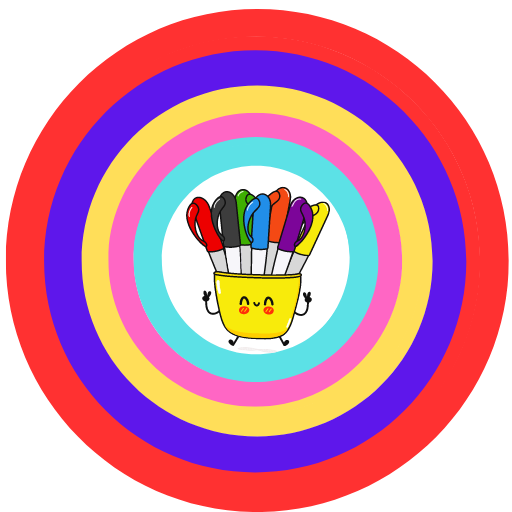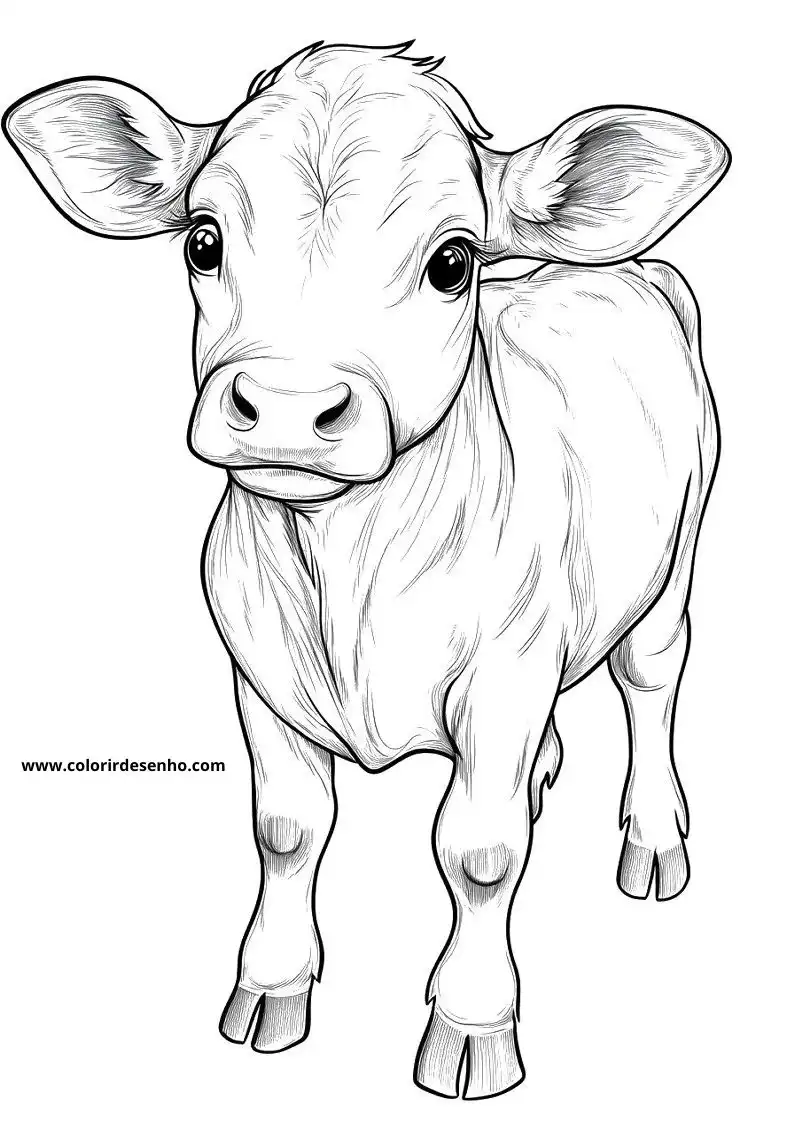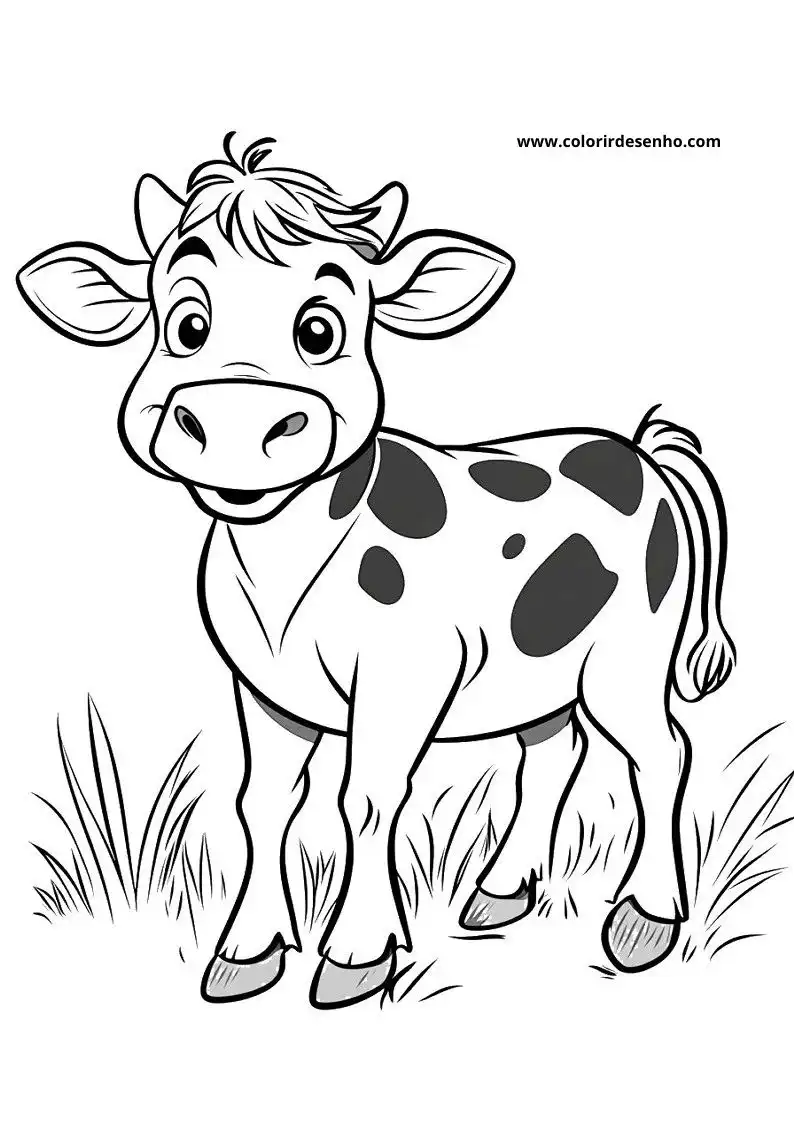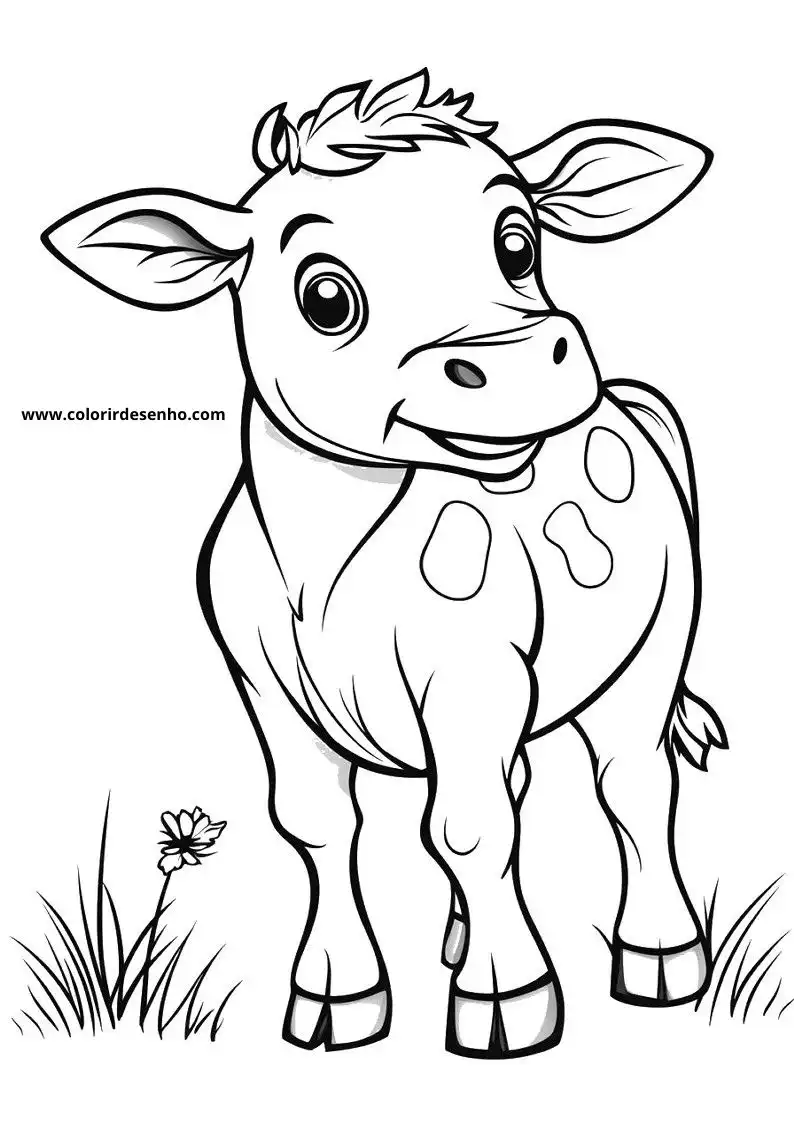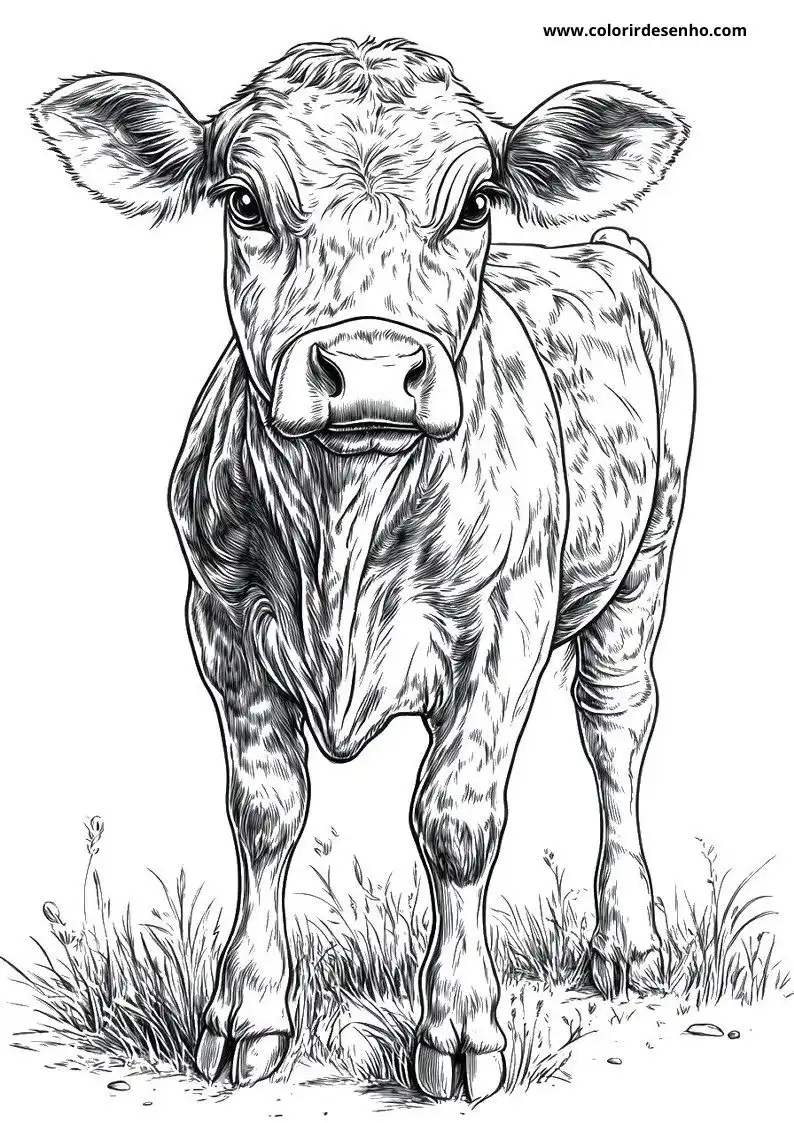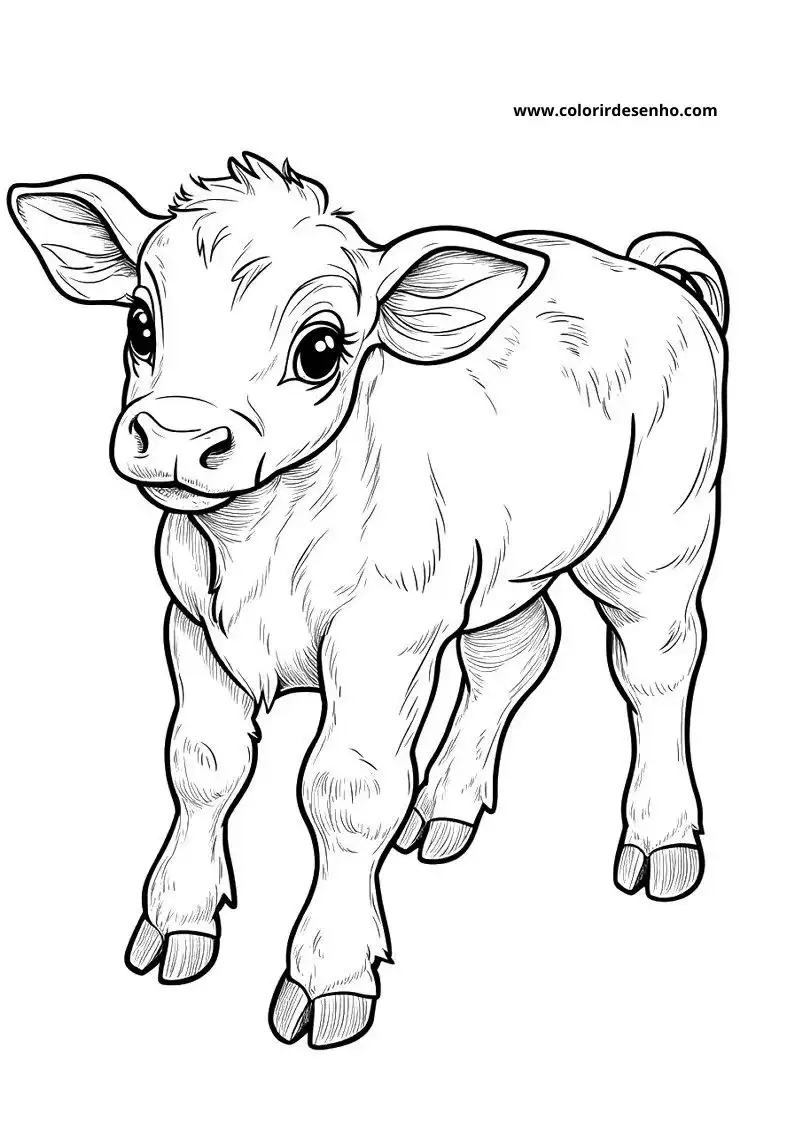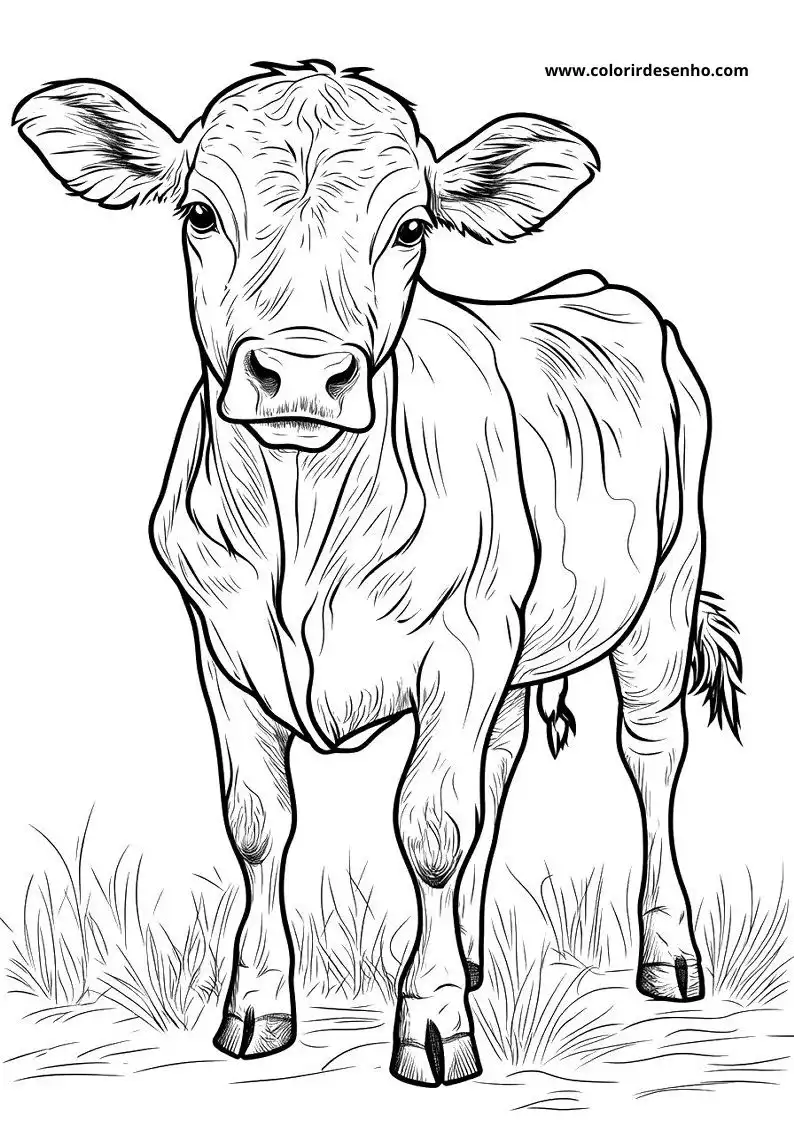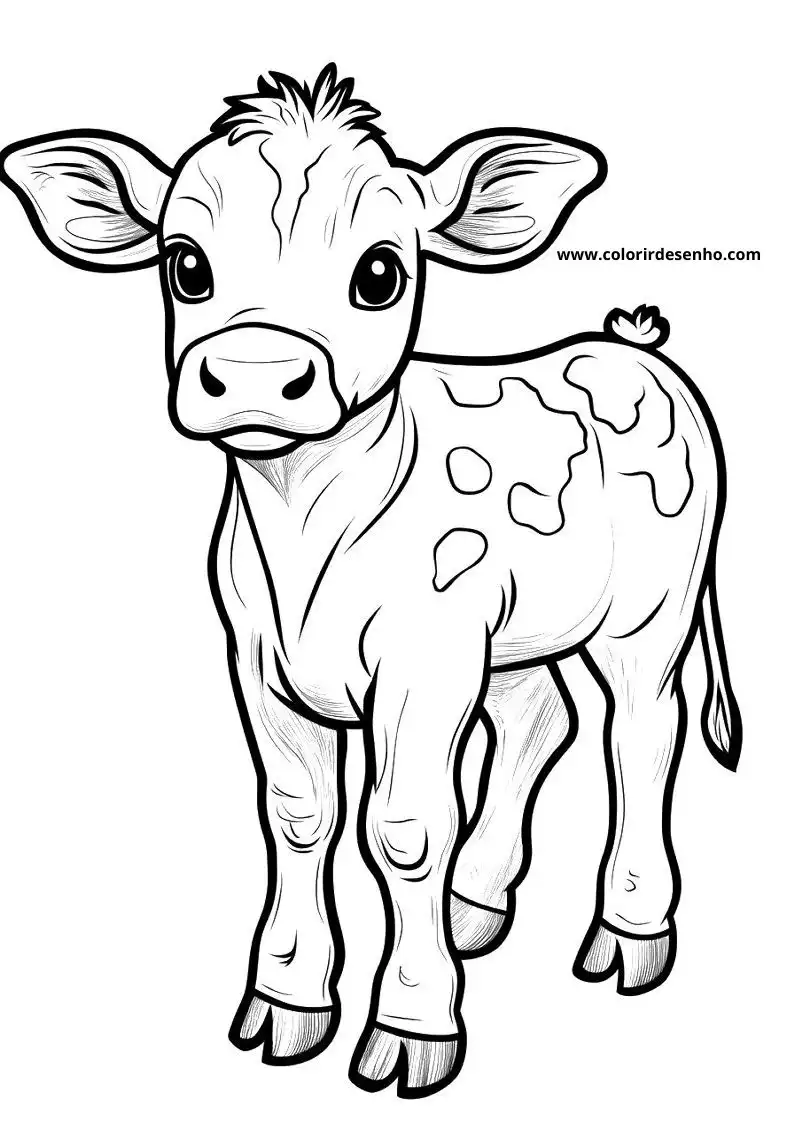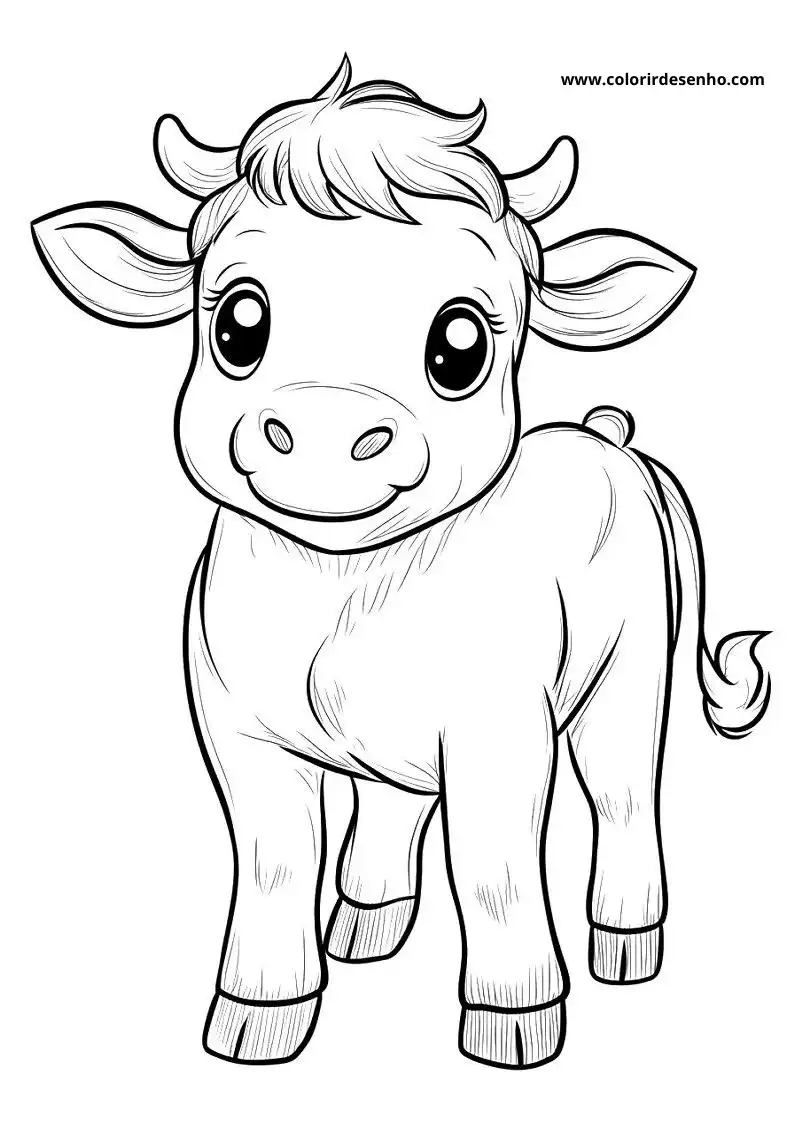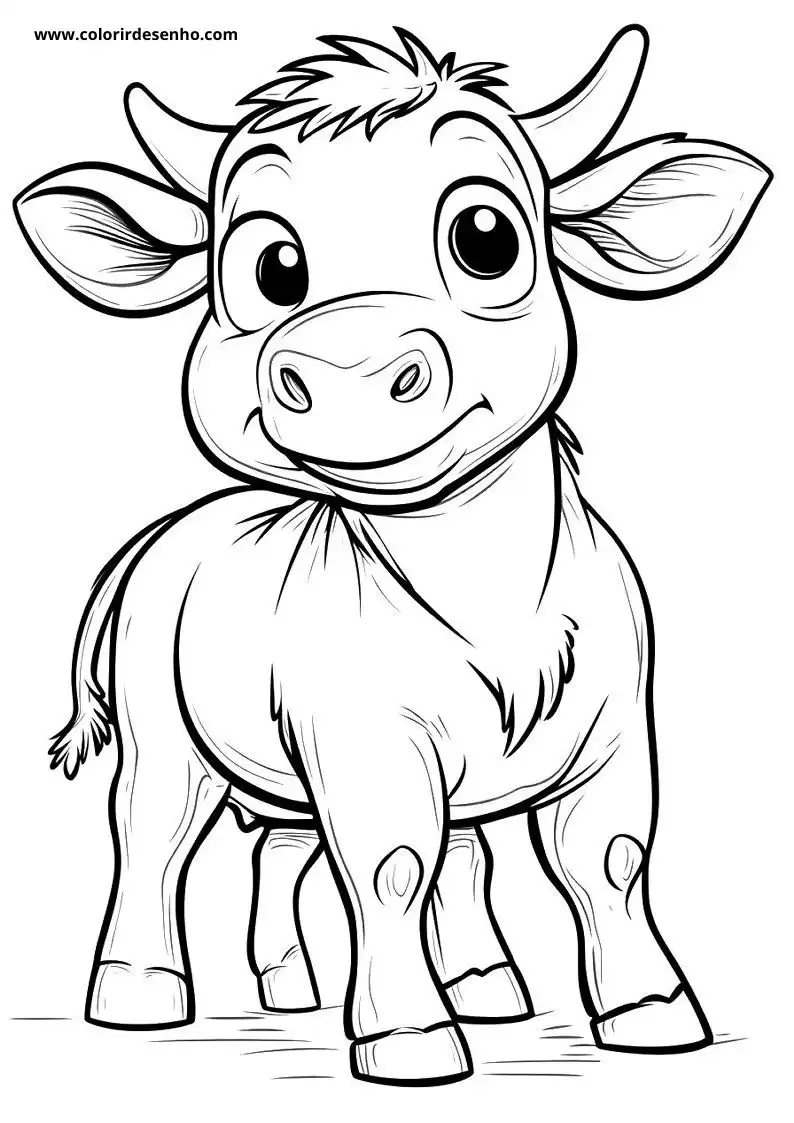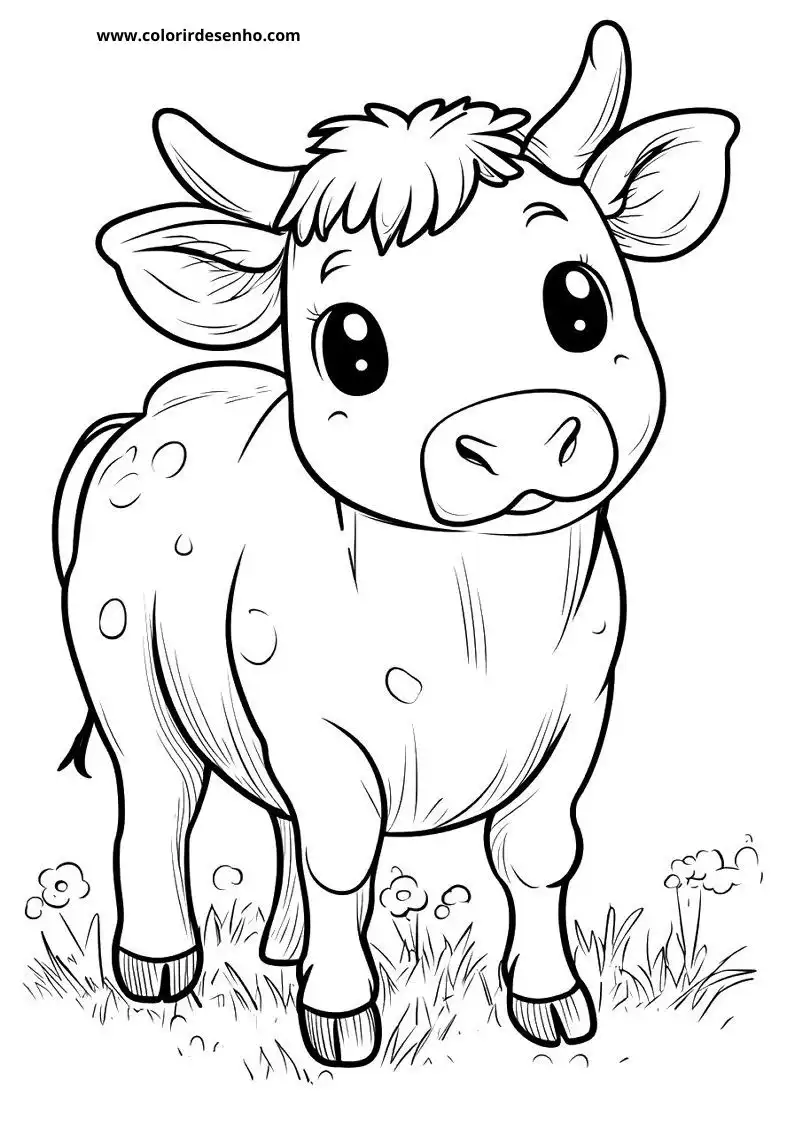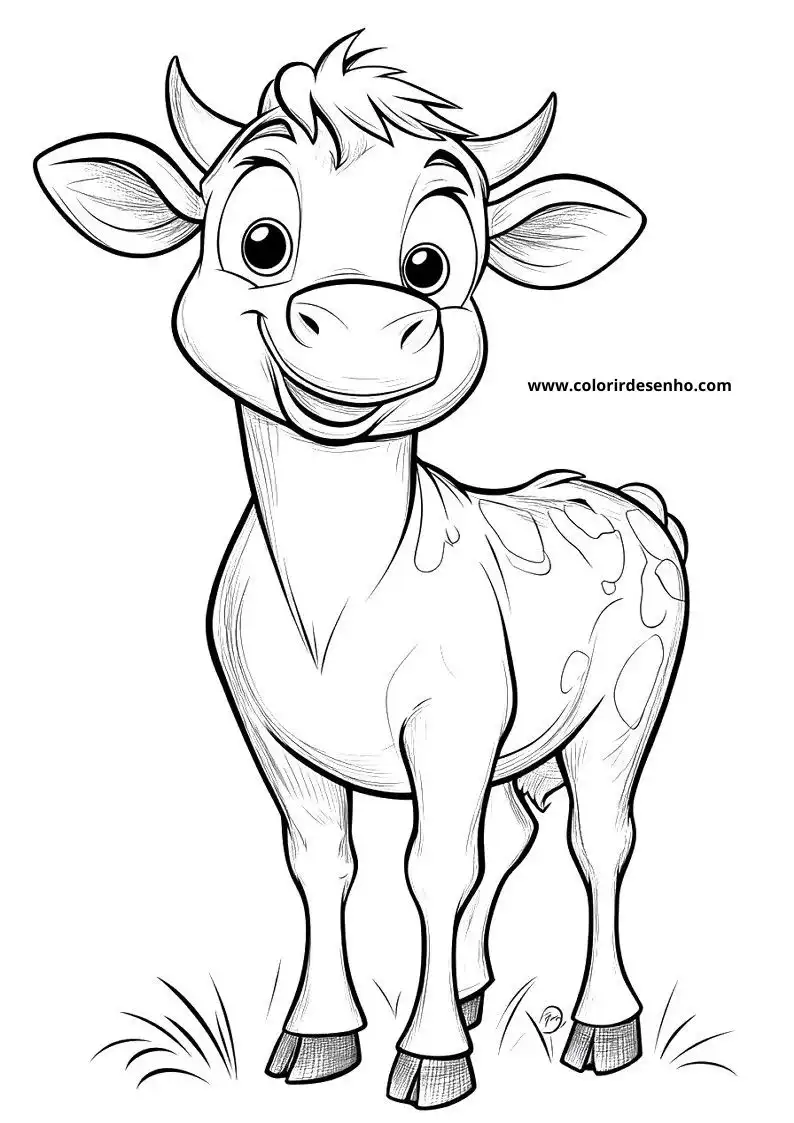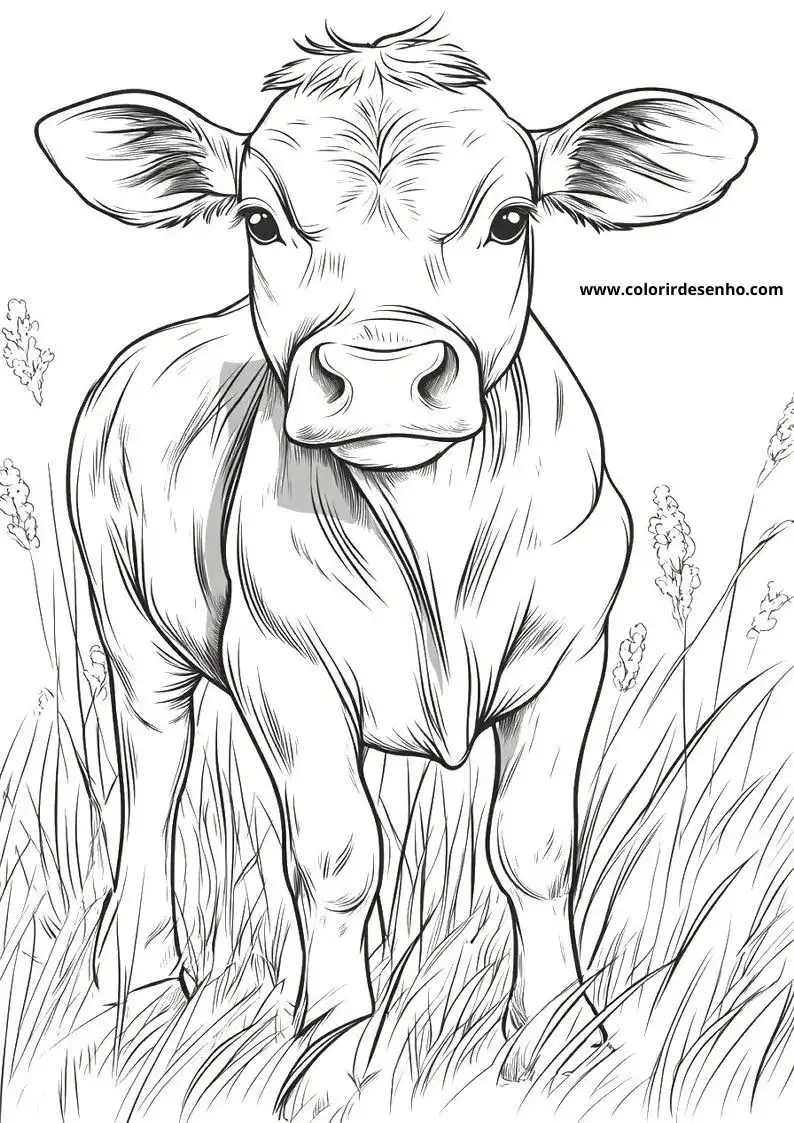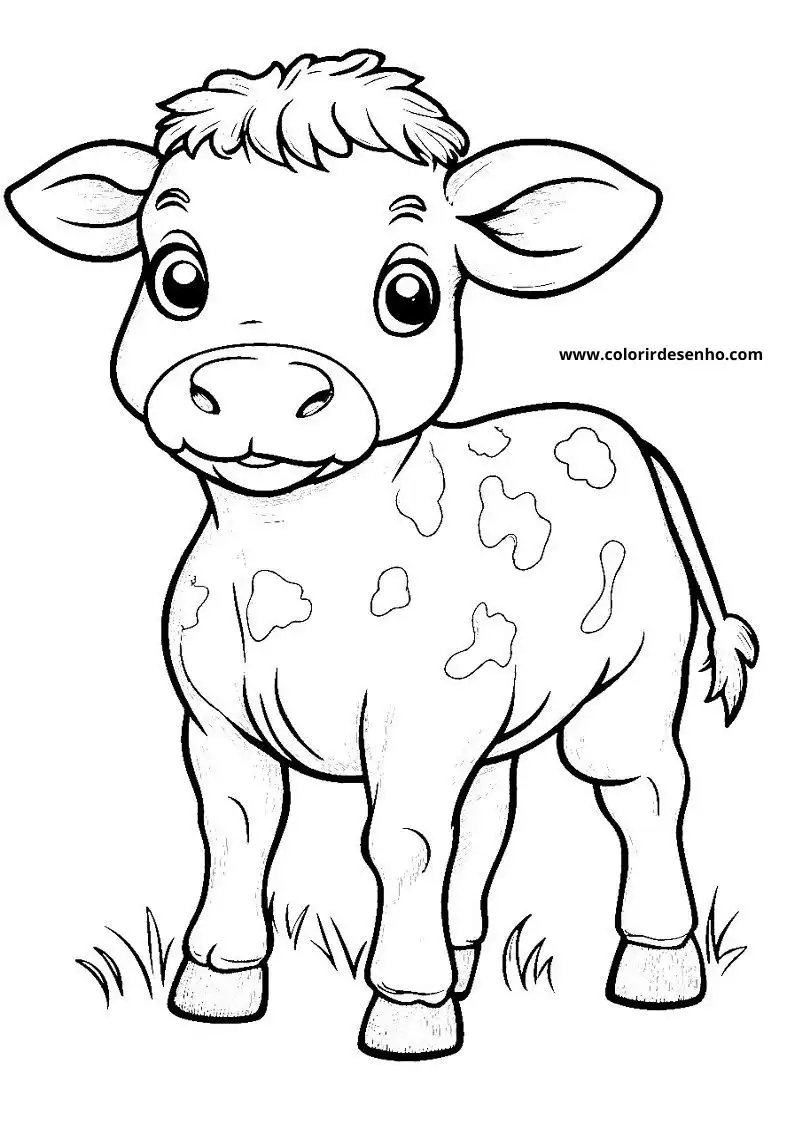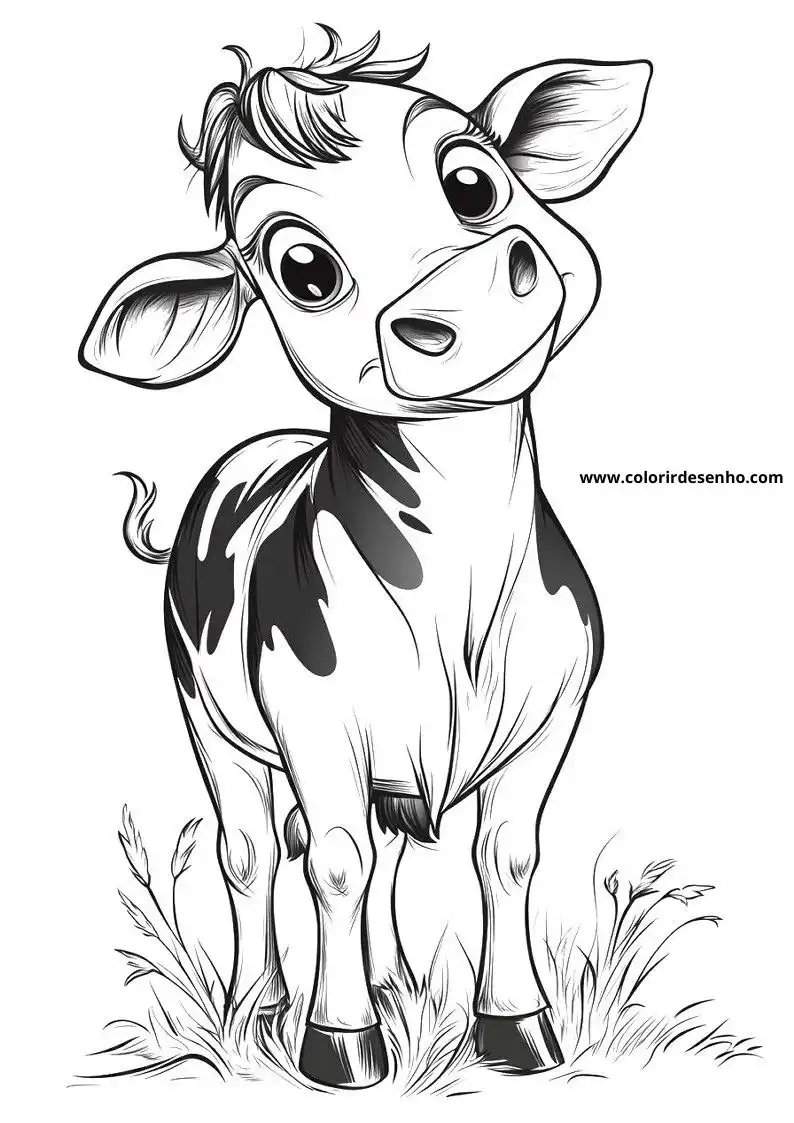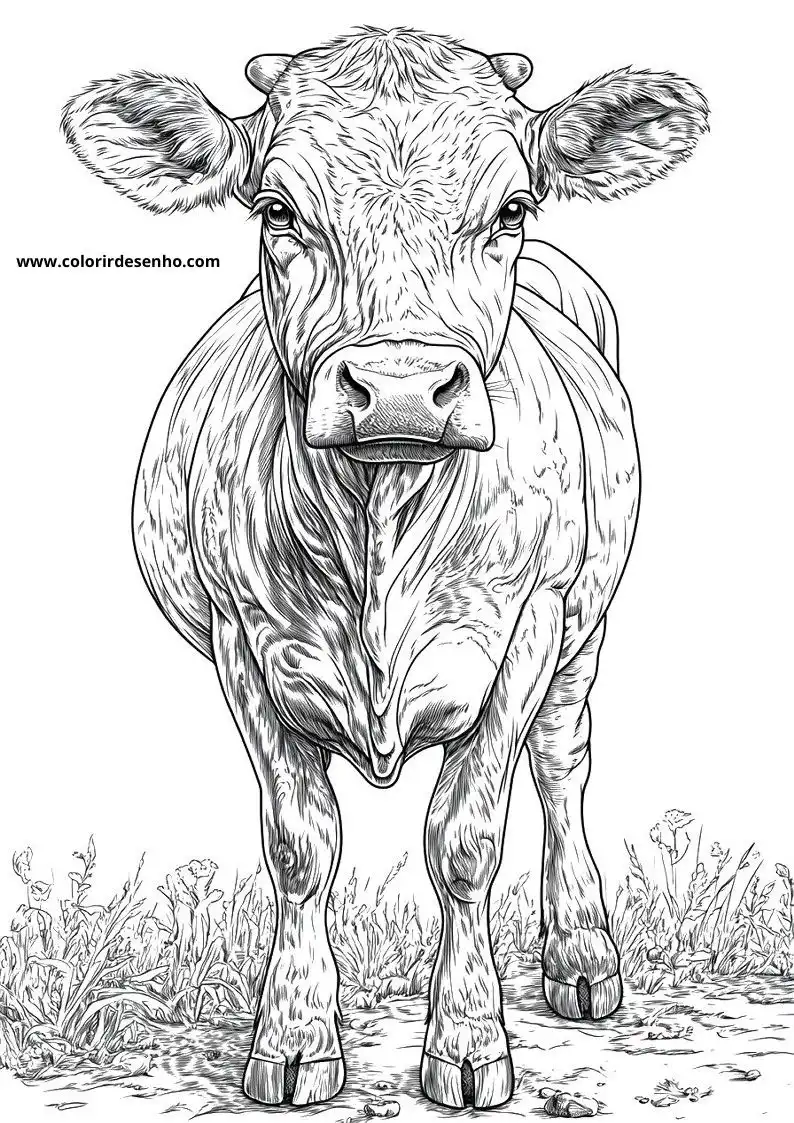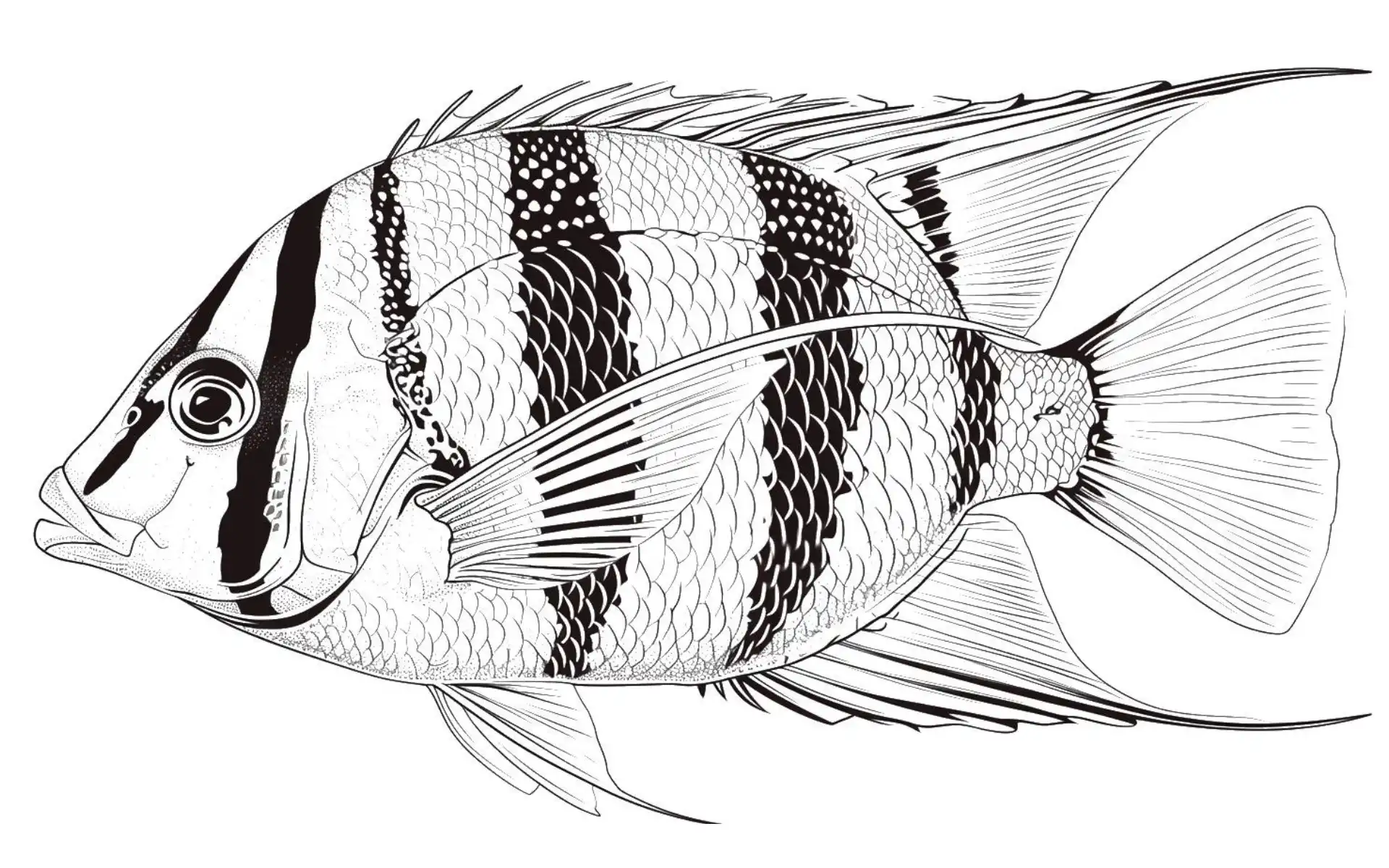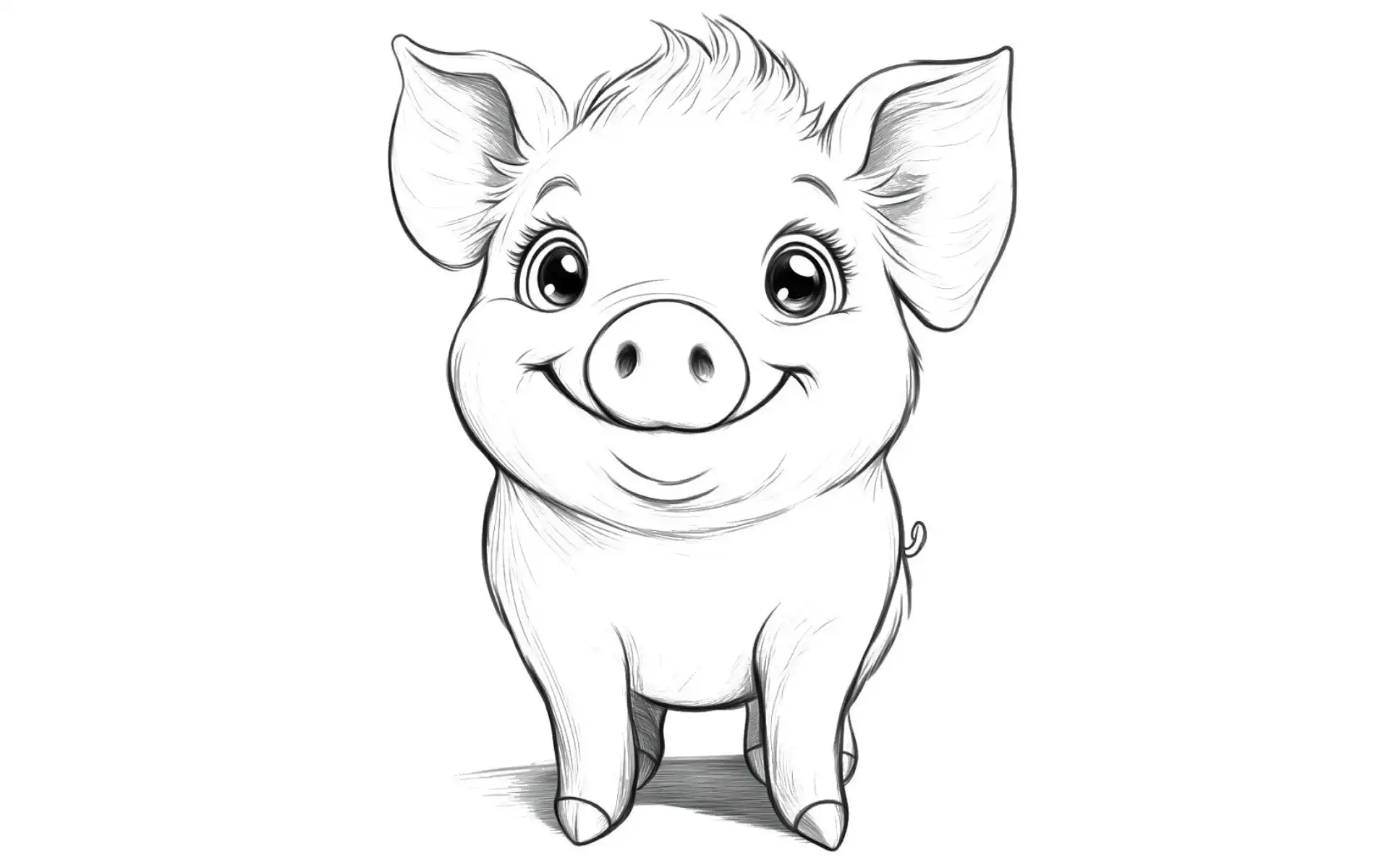Cow Coloring Pages - 137 Cows To Color And Curiosities
Free Printable Cow to Color: Fun and Educational Pages
Cow Coloring Pages are not just for fun they’re also a fantastic way to learn and ignite curiosity about animals. When we think of free printable cow to color, we’re offering a chance to educate and entertain. Cows, for example, are fascinating creatures with a long history alongside humans, and their habits are much more complex than we might imagine.
With a cow to print, kids have the opportunity to learn more about the behavior and characteristics of these animals while expressing their creativity. From the traditional cows we see in the fields to more stylized and fun versions, there’s a huge variety of forms and styles to color.
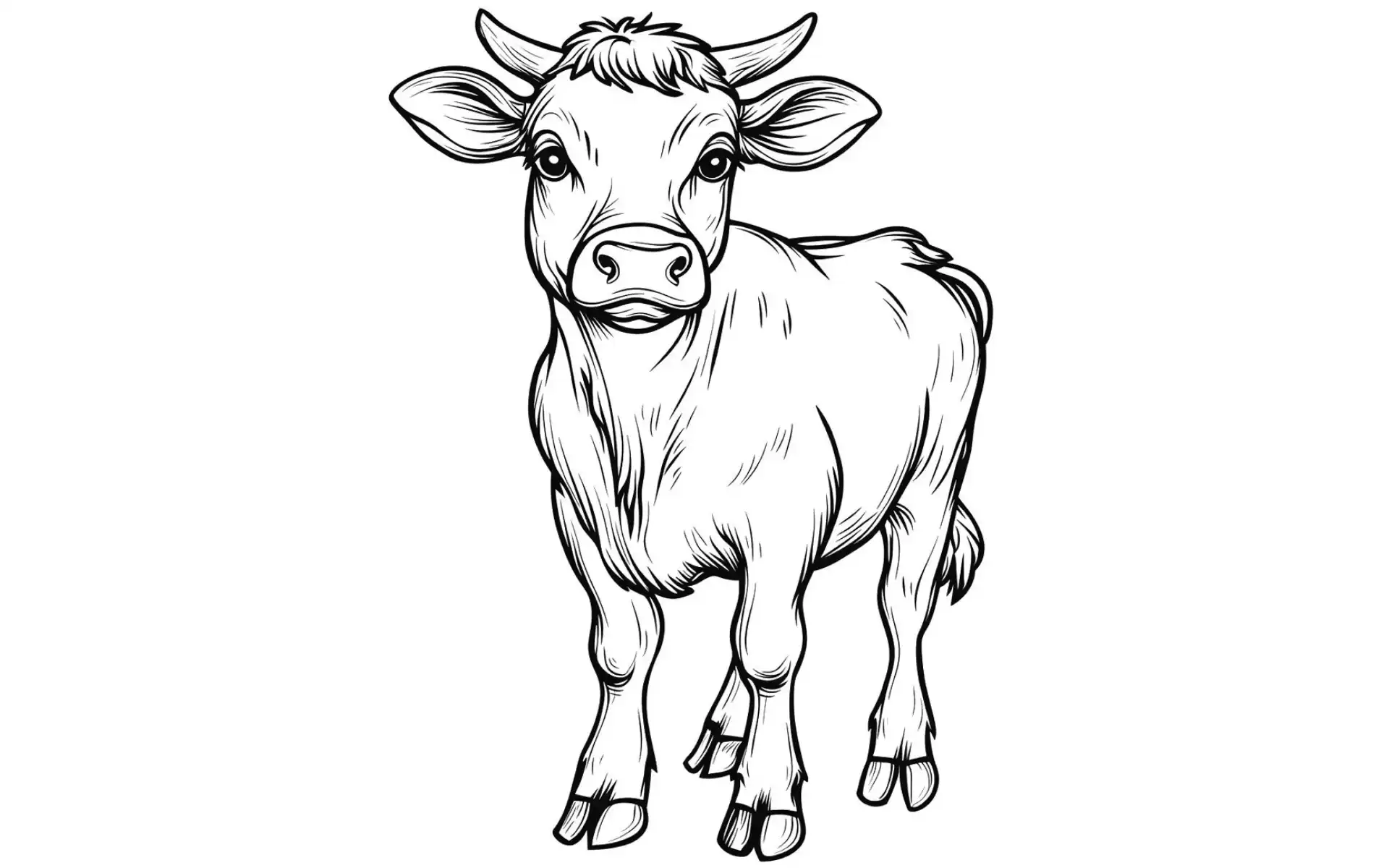
THE COLORING PICTURES ARE AT THE BOTTOM OF THE PAGE, WHEN YOU OPEN THE PICTURE, CLICK ON THE SAVE BUTTON ABOVE THE PICTURE.
The Origin of Domestic Cows
The cows we know today as domestic animals have a long history of domestication. They descend from a wild ancestor known as the aurochs, a large bovine that lived on the plains of Europe, Asia, and North Africa. Aurochs were domesticated around 8,000 B.C., transforming into the cows we’re familiar with today. This makes cows one of the oldest domesticated species in the world.
This process of domestication was crucial for the development of agriculture, as cows began to be used not only for milk and meat production but also as draft animals, helping to cultivate land. The importance of cows throughout history is undeniable, making them a fascinating presence in cow coloring pages.
Cows Have Personalities
Although cows are often seen as simple animals, the truth is that each cow has its own personality. Studies show that some cows are more outgoing and curious, while others can be more shy or reserved. They also form friendships within the herd and show affectionate behaviors toward each other.
When thinking of a cow to color, it’s interesting to remember that you can express this diversity of personalities in your drawing. Whether it’s a cheerful cow or a calm cow resting under a tree, the possibilities are endless.
Incredible Facts About Cows
Cows are animals full of surprises. Besides being fundamental to agriculture and food production, they also play important roles in various cultures and religions around the world. Let’s explore some fascinating curiosities about cows that go beyond the green pasture.
Cows Can Climb Stairs, But Not Go Down Them
A fun fact about cows is that they can climb stairs, but due to the structure of their knees, they have a lot of difficulty going down. This happens because cows’ front legs are stronger than their hind legs, which prevents them from easily performing downward movements. So, if a cow decides to climb stairs, it’s better to ensure there’s a ramp for her to descend!
This kind of information is interesting because it shows us that, even being big and robust, cows have their physical limitations. Who would have thought that a cow, which seems so calm in the field, would have such a funny and unique trait?
Cows Sleep Less Than Humans
Did you know that cows sleep much less than we do? They usually sleep only about four hours a day! However, this doesn’t mean they stay awake all the time. Cows rest during several small naps throughout the day, which keeps them alert and rested.
This ability to sleep little is due to the fact that, in nature, cows needed to be always attentive to possible predators. Even on modern farms, this instinct to stay alert is still part of cows’ behavior.
The Cow in the World and Popular Culture
The cow is an animal that holds great importance in various cultures around the world. Its image is present in myths, traditions, and even in popular art. Let’s explore some curiosities about how cows are seen and valued in different parts of the globe.
The Cow Is Sacred in India
In India, the cow is a sacred animal, revered by millions of people, especially within Hinduism. It is seen as a symbol of life and fertility, being protected and respected throughout the country. Cows are often associated with the mother goddess, Kamadhenu, who in Hindu mythology is considered the cow that fulfills all desires.
Because of this reverence, cows roam freely through the streets of many Indian cities. They are part of people’s daily lives, who treat them with respect and even decorate them during religious festivals. When drawing a cow to print inspired by India, you can imagine a cow adorned with flowers and vibrant colors, representing the rich culture of this country.
Cows Play an Important Role in Sustainability
Cows also play an interesting role in environmental balance, especially when raised sustainably. In proper management systems, such as pasture rotation, cows help preserve the soil and prevent land degradation. Cow manure is an excellent source of nutrients, being used as a natural fertilizer on many farms.
Sustainable cattle raising is a practice increasingly valued, especially with the growing concern for the environment. This approach reinforces the importance of cows in the agricultural cycle and in preserving the rural ecosystem.
More Fascinating Facts About Cows
Cows are extraordinary animals and still have much to teach us. Here are some more fascinating facts about them that can inspire your artistic creations when working on cow coloring pages.
Cows Have a Strong Maternal Instinct
Cows have a very strong maternal instinct. When they have a calf, they protect it intensely and always stay close to ensure it’s safe. It’s common to see cows licking their calves right after birth to clean them and stimulate the blood circulation of the little ones.
This protective behavior is similar to that of many other mammals but is even more evident in cows due to their social nature. When coloring a cow with her calf, you can highlight this special relationship between mother and offspring, representing affection and protection with soft and warm colors.
Cows Have a Powerful Sense of Smell
Cows possess an extremely keen sense of smell. They can detect odors at distances of up to six miles! This is particularly useful for finding water sources or sensing the presence of predators. Their highly developed sensory system helps them survive and adapt to their surroundings.
This is curious because, even though they seem so calm and serene, cows are constantly using their senses to understand what’s happening around them. This characteristic can be interesting to illustrate a cow in a natural environment full of aromas and sensations.
The Importance of Cows in History and Economy
Cows have always played a central role in human life. Since ancient times, they have been essential for the development of agriculture and the economy, serving as one of the main sources of food and labor in many countries.
Cows Were Used as Currency
In ancient times, in some cultures, cows were used as a form of currency. Their value was so high that owning a large herd was a sign of wealth and status. This practice was common in agricultural societies, where cows were not only a source of food but also a symbol of prosperity.
This historical fact shows how valuable cows were not only for what they produced but for what they represented in terms of power and economy. Perhaps when coloring the cow, you can imagine it in an ancient setting, as part of a prosperous farm from times past.
The Economic Impact of Cows in Brazil
In Brazil, cows play a fundamental role in the economy. The country is one of the largest producers and exporters of beef and milk in the world. Cattle raising is one of the main economic activities in the countryside, generating jobs and boosting the local economy. Brazil stands out for the quality of its products and the vast expanse of land dedicated to livestock, which allows for the development of large herds.
The impact of cows on the Brazilian economy goes beyond meat and milk production. They are also fundamental for leather production, used in various industrial sectors, from fashion to the manufacture of furniture and accessories. This economic importance makes cows one of the most valued animals in the Brazilian rural scene.
The Nelore Breed dominates Brazilian livestock farming
In Brazil, the Nelore breed is the most popular among cows raised for cattle farming. This breed of Indian origin is highly adapted to the country’s tropical climate, which makes it ideal for breeding in large pastures. Nelore cows are known for their resistance, ease of reproduction and high quality meat, and are responsible for a large part of the country’s production.
When painting a cow inspired by the Brazilian landscape, how about depicting a Nelore cow in a vast, sunny field? This image could well represent the economic and cultural importance that these cows have for Brazil.
Cows and Their Contributions to Human Life
Cows are not only important economically, but also have a deep connection to human life in many ways. From providing food to creating emotional bonds with humans, cows are present in many spheres of our daily lives.
Cow's milk is one of the most consumed foods in the world
Cows have emotions
Cows are animals that, just like humans, experience emotions. They can feel joy, fear, anxiety and even form deep emotional bonds with other cows or humans. There are reports of cows showing sadness when a member of the herd dies, and others expressing joy when reunited with a human friend after a long period of separation.
This level of emotional sensitivity makes cows unique animals, and is an important characteristic to consider when drawing and coloring cows. When coloring, you can imagine a cow in a moment of joy, grazing with its friends in the field or playing with other animals.
The Importance of Cows for Sustainability
Today, cattle raising is increasingly linked to sustainability practices. Proper herd management can help preserve the environment and promote the health of rural ecosystems.
Cows Help Reduce Soil Erosion
The concept of the circular economy, which seeks to reduce waste and make the most of resources, also applies to cow farming. Many by-products of cattle farming, such as leather, manure and even leftover bones, are used in different industries. Leather, for example, is used to make clothes, shoes and accessories. The manure is a source of fertilizer for agriculture.
This intelligent use of cow by-products shows how it is possible to create a more sustainable and efficient system in which almost nothing is wasted. By drawing and coloring a cow, you can be inspired by these practices and imagine an environment in which everything is used, with a natural cycle of reuse.
With so many interesting facts about cows and their importance in various areas of our lives, it’s easy to see how special they are. As well as being an endless source of inspiration for drawings, cows have a rich history full of contributions to humanity, whether in the economy, culture or the environment. Now, just take advantage of these 137 cow coloring pages and explore all your creativity!
